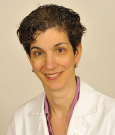On January 9, 2014, Kathleen Sebelius, Secretary of the Department of Health and Human Services, announced that under the Patient Protection and Affordable Care Act, women at increased risk of breast cancer will be entitled to preventive medications without incurring out-of-pocket costs (with the proviso that they are also at low risk for any adverse effects of these medications). This means that most health insurance companies and employer plans must offer preventive services that include these drugs at no extra cost to patients, and insurers have 1 year to implement this policy.1
“We are making significant advancements in combating this disease—and for women who are shown to be at a higher relative risk for breast cancer, today, access to early treatments can improve their health,” wrote Ms. Sebelius and Congresswoman Debbie Wasserman Schultz, who represents Florida’s 23rd Congressional District and is a breast cancer survivor, in a blog post at HHS.gov/HealthCare.2
USPSTF Recommendation
The impetus for the coverage decision was the U.S. Preventive Services Task Force (USPSTF) grade B recommendation made in September 2013,3 stating that there is “adequate evidence” that medications such as tamoxifen and raloxifene (Evista) can “reduce the risk of invasive estrogen receptor (ER)-positive breast cancer in postmenopausal women who are at increased risk for breast cancer.”
The USPSTF is composed of independent physicians and academics, and this group awards letter grades to treatments or interventions. Items or services rated A or B by the USPSTF must be covered by insurers at no extra costs, including deductibles or copays.
Under the Affordable Care Act, women over age 40 are also entitled to free breast cancer mammography screenings every 1 or 2 years, as well as genetic counseling and chemoprevention counseling for women at higher risk for breast cancer, whether due to age, family history, or other risk factors.
On the day of the announcement, the American Cancer Society Cancer Action Network praised the new policy as an important milestone. “This policy means that millions of women at high risk for breast cancer will know that they can access proven risk-reducing medications at no cost to them. Studies show that even modest cost sharing can keep patients from taking advantage of provident tests and therapies. By making prevention more accessible and affordable, the Affordable Care Act is helping people stay healthy and avoid the high costs of treatment after diagnosis,” said spokesman Steve Weiss.4
Regarding the announcement, U.S. Second Lady Jill Biden, EdD, wrote on the White House blog, “Now, if their doctor recommends that the benefits of this treatment outweigh the risks, one question women across the country won’t have to ask is whether they can afford it.”5
Important Step
Although this is an important first step in improving access to chemoprevention, getting drugs for free removes only one potential barrier for women at high risk, explained Claudine Isaacs, MD, in an interview with The ASCO Post. Dr. Isaacs is Co-Director of the Fisher Center for Familial Cancer Research and Medical Director of the Cancer Assessment and Risk Evaluation (CARE) program at Georgetown Lombardi Comprehensive Cancer Center in Washington, DC.
“Studies have shown that the uptake of chemoprevention is very low among women at high risk of developing breast cancer. The barriers to uptake go beyond finances. Many healthy women may not want to take a drug with side effects. This is a complex issue,” she stated.
Dr. Isaacs said that one of the factors influencing women’s decisions regarding chemoprevention is discussion with their primary care physicians, many of whom identify other priorities for the limited time they have with their patients, especially when most women at high risk will never develop breast cancer.
“In addition to other important issues, doctors have to convince a healthy woman that the benefits [of taking drugs like tamoxifen or raloxifene] exceed the risks. Women who have had lobular carcinoma in situ or atypical hyperplasia—those at the highest risk level—may be easier to convince,” Dr. Isaacs noted. ■
Disclosure: Dr. Isaacs reported no potential conflicts of interest.
References
1. Center for Consumer Information & Insurance Oversight: Affordable Care Act Implementation FAQs - Set 18. Available at http://www.cms.gov/CCIIO/Resources/Fact-Sheets-and-FAQs/aca_implementation_faqs18.html. Accessed January 20, 2014.
2. Sebelius K, Wasserman Schultz D: More than 2.8 million reasons for hope. Posted January 9, 2014. Available at www.hhs.gov. Accessed January 20, 2014.
3. Moyer VA: Medications for risk reduction of primary breast cancer in women: U.S. Preventive Services Task Force recommendation statement. 159:698-708, 2013.
4. Galewitz P: For high-risk women, some breast cancer drugs to be free. Posted January 9, 2014. Available at capsules.kaiserhealthnews.org. Accessed January 20, 2014.
5. Biden J: This is the Affordable Care Act: Giving women at high risk for breast cancer access to free chemoprevention medication. Posted January 9, 2014. Available at www.whitehouse.gov. Accessed January 20, 2014.



